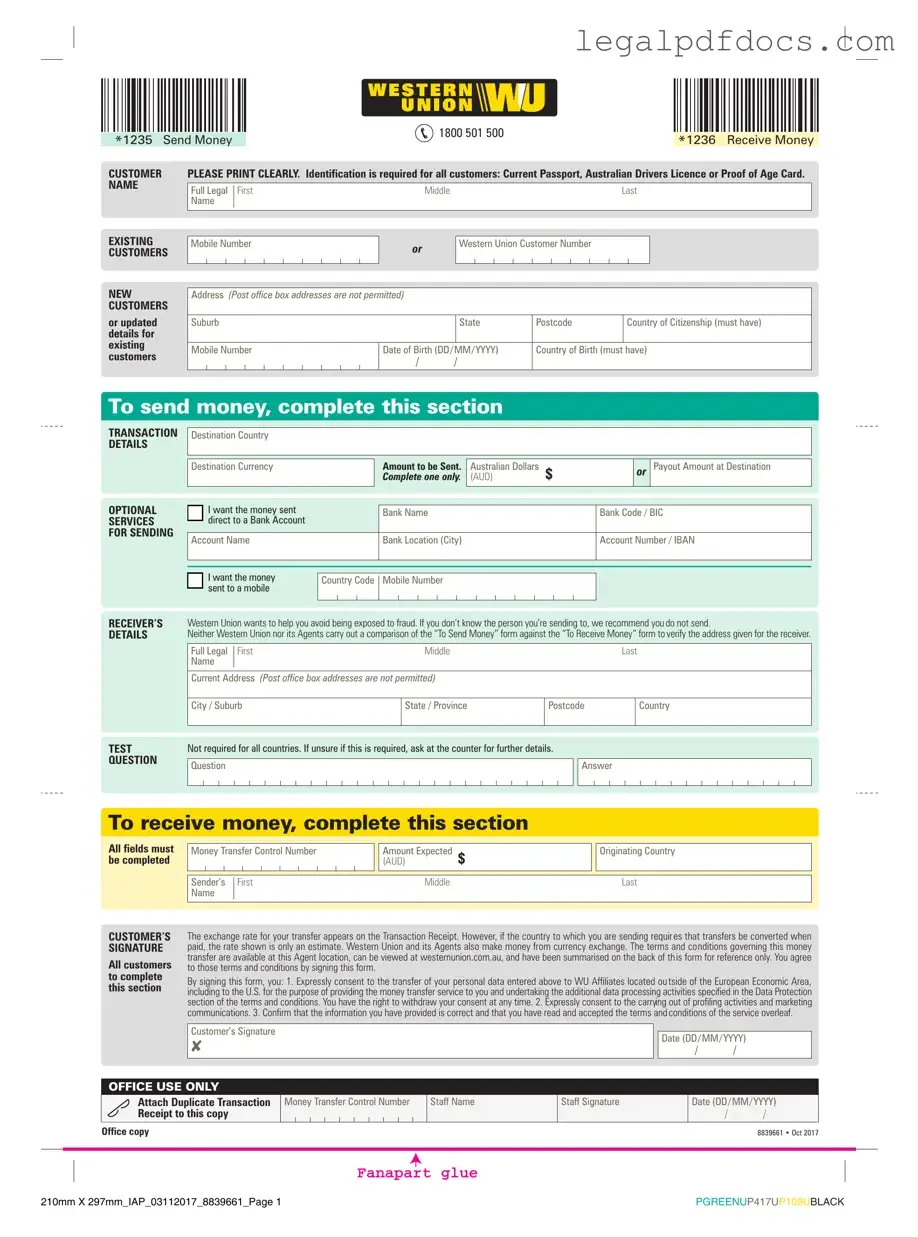The Western Union form plays a crucial role in facilitating money transfers and communication across vast distances. This form is designed to capture essential information, ensuring that transactions are processed smoothly and securely. Users must provide details such as the sender's and recipient's names, addresses, and the amount being sent. Additionally, the form includes sections for selecting payment methods and confirming identification, which helps prevent fraud and ensures compliance with regulations. Understanding how to properly fill out the Western Union form can significantly enhance the efficiency of sending money, whether for personal or business purposes. By familiarizing oneself with the required fields and procedures, individuals can navigate the process with confidence, making financial transactions simpler and more accessible.
